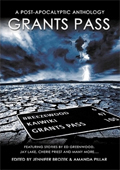BANK CEO CHEATS AMERICANS OUT OF MILLION$ IN TARP MONEY
By
NWV News writer Jim Kouri
Posted 1:00 AM Eastern
October 14, 2010
© 2010 NewsWithViews.com
Neil
Barofsky, Special Inspector General for the Troubled Asset Relief Program
(SIGTARP), had warned lawmakers, "Inadequate oversight and insufficient
information about what companies are doing with the money leaves the
program open to fraud, including conflicts of interest facing fund managers,
collusion between participants and vulnerabilities to money laundering."
Charles J. Antonucci, 59, the former President and Chief Executive Officer
of The Park Avenue Bank, pled guilty last week in Manhattan federal
court to multiple criminal charges relating to Antonucci's attempt to
fraudulently obtain more than $11 million worth of taxpayer rescue funds
from the Troubled
Asset Relief Program ("TARP"). He also pled guilty to
bank bribery, embezzlement of bank funds, and participating in a $37.5
million scheme that left an Oklahoma insurance company in receivership.
In March 2010, Antonucci become the first defendant charged with attempting to steal from the taxpayers' investment in TARP. Friday, he becomes the first to be convicted. And the media’s silence regarding the conviction was deafening, according to political strategist Mike Baker.
Friday's plea marks an important chapter and demonstrates that SIGTARP and its law enforcement partners will ensure that would-be wrongdoers who seek to profit criminally from this historic program will be caught, charged, and brought to justice, according to a report obtained by the White Collar Crime Committee of the National Association of Chiefs of Police.
TARP
was passed by Congress and signed into law in 2008 by President George
W. Bush to purchase assets and equity from financial institutions to
strengthen the financial system. TARP allows Treasury Department to
purchase or insure up to $700 Billion of "troubled assets",
defined as:
"Residential or commercial mortgages and any securities, obligations,
or other instruments that are based on or related to such mortgages,
that in each case was originated or issued on or before March 14, 2008,
the purchase of which the Treasury Secretary determines promotes financial
market stability. And any other financial instrument that the Treasury
Secretary, after consultation with the Chairman of the Board of Governors
of the Federal Reserve System, determines the purchase of which is necessary
to promote financial market stability, but only upon transmittal of
such determination, in writing, to the appropriate committees of Congress."
According to investigators, prosecutors, the complaint against Antonucci previously filed in Manhattan federal court, statements made during the guilty plea proceeding, and other information in the public record:
The Park Avenue Bank (the "Bank") was a federally insured and state-chartered bank that was headquartered at 460 Park Avenue, New York, New York, with retail branches in Manhattan and Brooklyn. The Bank's clients consisted primarily of small businesses, for whom the bank made loans, extended lines of credit, and maintained depository accounts. As of the end of 2009, the bank had approximately $500 million on deposit, and over $520 million in assets. Antonucci served as President and Chief Executive Officer ("CEO") of The Park Avenue Bank from June 2004 to October 2009, and also served on its Board of Directors.
On
March 12, 2010, the NYSBD seized the offices, branches, and assets of
the Bank, citing ineffective management and inadequate capital, and
immediately appointed the FDIC as receiver.
Three days later, on March 15, 2010, federal authorities arrested Antonucci
at his home in Fishkill, New York, for engaging in a broad range of
illegal conduct that contributed, in part, to the Bank's demise.
With his guilty plea Friday, Antonucci became the first defendant convicted of fraud on the TARP, a program whose purpose was to provide funds to viable financial institutions to stabilize and strengthen the nation's financial system, and to enable those financial institutions to increase the flow of financing to U.S. businesses and consumers.
TARP funds were made available to qualifying banks; one of the critical elements of the TARP qualification process was the capital position of the applicant bank, which was evaluated by the FDIC as one of the Bank's regulators. Among other things, Antonucci misled the FDIC and NYSBD by misrepresenting the source of millions of dollars of money that he claimed to have invested in the Bank out of his own pocket to recapitalize the Bank. He then attempted to use that sham recapitalization to fraudulently obtain over $11 million in TARP funds by convincing the Bank's regulators that Antonucci had recapitalized the Bank when, in fact, he had not.
Manhattan U.S. Attorney Preet Bharara said: "[Antonucci's] guilty plea, the first ever conviction for fraud against the TARP, should send a strong message to all those who would attempt to loot or steal from our financial institutions: This Office and our law enforcement partners will be watching. Whether you are a bank teller or a bank president, you are not above the law."
Antonucci pled guilty in Count One of the Information to deceiving the FDIC and NYSBD by falsely stating that he had invested $6.5 million of his own funds into the Bank. Instead, Antonucci had engaged in a complicated round-trip loan transaction in which he merely borrowed from the Bank itself the funds that he purportedly invested in the Bank, meaning that the Bank received no additional capital from the transaction. When the Bank's regulators began investigating the source of the purported $6.5 million capital infusion, Antonucci lied to them about the true nature of the transaction.
Antonucci also pled guilty to engaging in fraud in connection with the offer and sale of securities relating to the Bank's application for TARP funds through the Capital Purchase Program. As charged in Count Two of the Information and in the Complaint, Antonucci tried to induce the U.S. Government to provide TARP funds in exchange for securities issued by the Bank by misrepresenting the Bank's capital position.
In furtherance of this scheme, Antonucci fraudulently used the round trip transaction to support his application, in, among other things, telephone calls to FDIC regulators reviewing the Bank's TARP application, and falsely represented that his purported substantial, personal capital contribution to the Bank should factor in favor of the Bank's TARP application. Again, the supposed personal contribution by Antonucci was actually money loaned by the Bank itself. Ultimately, the Bank's application for an $11,252,480 investment from TARP was denied.
Antonucci also pled guilty to a pattern of self-dealing and accepting bribes to influence his decisions as the President and CEO of the Bank. For example, as charged in Count Three of the Information and described in the Complaint, Antonucci accepted bribes from customers of the Bank, including but not limited to over $250,000 in cash bribes, free use of a customer's airplane, and free use of another customer's luxury automobile, in exchange for Antonucci's approval of various banking transactions. Indeed, on more than ten occasions in 2008 and 2009, Antonucci used a private plane owned by a co-conspirator ("CC-1") to fly to, among other places, Florida, Panama, Arizona (so that Antonucci could attend the Super Bowl), and Augusta, Georgia (so that Antonucci could attend the Masters Golf Tournament). All the while, Antonucci approved over $8 million in overdrafts on accounts for entities controlled by CC-1 at Park Avenue Bank.
In addition to this self-dealing, Antonucci pled guilty to personally embezzling and misappropriating bank funds, as charged in Count Four of the Information. Among other things, Antonucci approved a $400,000 loan through the Bank to an entity he controlled called Easy Wealth, through which Antonucci obtained tens of thousands of dollars in proceeds. Antonucci also had the Bank pay rent to him for one or more properties that Antonucci owned and which the bank did not use, including a property in Fishkill, New York, and directed Bank employees to perform substantial work on non-Bank matters in which he had personal financial interests.
To hide and repay a $2.3 million loan that was part of the fraudulent round-trip loan transactions described above, between June and October 2008, Antonucci and his co-conspirators engaged in a series of sham transactions using the funds of another Park Avenue Bank depositor, General Employment Enterprise, Inc. ("GEE"). As charged in Count Five of the Information, to hide these transactions from GEE's auditors, Antonucci caused a counterfeit certificate of deposit ("CD") to be created by Park Avenue Bank, making it appear that GEE's $2.3 million had been invested in a 90-day CD at the Bank. In fact, and as Antonucci well knew, there was no CD, and the $2.3 million was wire transferred from GEE's account into an account controlled by Antonucci, which was then used to repay a loan. Later, when GEE's auditors requested certification from Park Avenue Bank that the CD existed, Antonucci fraudulently signed that certification, when he knew that no CD in fact existed.
Also, from July 2008 through November 2009, as charged in Count Five of the Information, Antonucci conspired with others to defraud the State of Oklahoma Insurance Department in connection with the $37.5 million sale of an insurance company that was later placed in receivership. In connection with this, Antonucci made various false statements to the Oklahoma Insurance Department regarding the financial state of the insurance company.
As part of his guilty plea Friday, Antonucci also admitted the $44 million in forfeiture allegations in the Information, and reached an agreement with the Government to pay an $11.2 million money judgment and forfeit various assets owned by him.
| Subscribe to the NewsWithViews Daily News Alerts! |
Antonucci faces a maximum sentence of 135 years in prison on the charges to which he pled guilty. He is scheduled to be sentenced by the U.S. District Judge Naomi Buchwald on April 8, 2011. He resigned as President and CEO of the Bank in November 2009.
Neil Barofsky, Special Inspector General for the Troubled Asset Relief Program (SIGTARP), had warned lawmakers, "Inadequate oversight and insufficient information about what companies are doing with the money leaves the program open to fraud, including conflicts of interest facing fund managers, collusion between participants and vulnerabilities to money laundering."
© 2010 NWV - All Rights Reserved














 Share
This Article
Share
This Article




